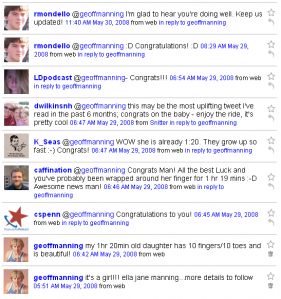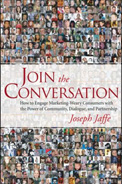I recently had the opportunity to exchange questions via email with Aaron Wall of SEOBook.com on a topic of my choosing in the area of Search Engine Marketing/Search Engine Optimization. My topic was how nonprofits can leverage search engine optimization and marketing tools to further their cause.
[ Geoff ] The recent announcement of the Google Grants program will certainly help level the playing field for non-profits. Could you tell me in your opinion just how important the Google Grants program will be for non-profits from an SEM standpoint?
[ Aaron ] The one area where Google Grants will help bring in direct revenues is for some fake charities set up to push business interests, where people donate valuable goods that get auctioned off in order to receive a tax break. Donate your car offers come to mind, because the tax loophole makes many people donating not care who gets the donation. Some donors may even shop for the maximum write off potential.
But for real charities, I think Google Grants should help them somewhat on an awareness front, but not to directly achieve donations…more to help them bring about awareness of issues that they support. Many non-profits have enough link equity that if they use some of the leading keyword research tools, use clarity in their language, and then make sure they optimize their page titles to focus on issues like world hunger, starving children, etc. that they should be able to get exposure for the issues. Then if people decide they care about those issues and how the non-profit wants to address them then they may donate and/or subscribe.
[ Geoff ] On SEOBook.com you have an article called “101 Link Building Tips to Market Your Website”. Do you feel there are certain link building methods on that list that are more important to non-profits than others methods? Would you revise that list at all for non-profits or do they apply across the spectrum of businesses and industries?
[ Aaron ] I think that even more than with other issues, non-profits tend to be budget limited and fight some of the more destructive elements of corporate externalities.
Given their limited capital (and the vast capital of some competing forces in many markets) non-profits really need to connect to people on an emotional level. They need to make people enraged or concerned, and they need to turn their readers/watchers/learners into teachers to help spread their message.
Here are 6 concepts stemming from that idea
- Syndicate content on sites like YouTube, like UNICEF did. This does 4 powerful things:
- Video content is quite captivating, and helps make the invisible visible (see the above UNICEF video)
- YouTube is a high authority site which has a lot of viewers
- YouTube foots the bandwidth bill
- Embeddable videos are easy to spread…and make your message go viral
- Use newsletters and create a central blog people can subscribe to.
- Some non-profits may even want to encourage guest bloggers from outsiders who really are passionate about the organization.
- Outside of videos it helps to have other widgets too…sites like Kiva allow donors to become the marketers by syndicating a widget to their website.
- Get people to feel involved in the process…let them feel ownership. I recently saw Brave New Films allow people to sponsor a message in the movie. Of course anyone who does that not only helps pay for the film, but they will also buy a copy, and watch it with their friends.
- If possible try to sell media or other goodies in pairs to try to get people to share it with friends. Host bring a friend nights, etc.
I appreciate and thank Aaron taking the time to answer my questions. You can learn more about Aaron and SEO/SEM at SEOBook.com


 It wasn’t too long after reading about James’
It wasn’t too long after reading about James’